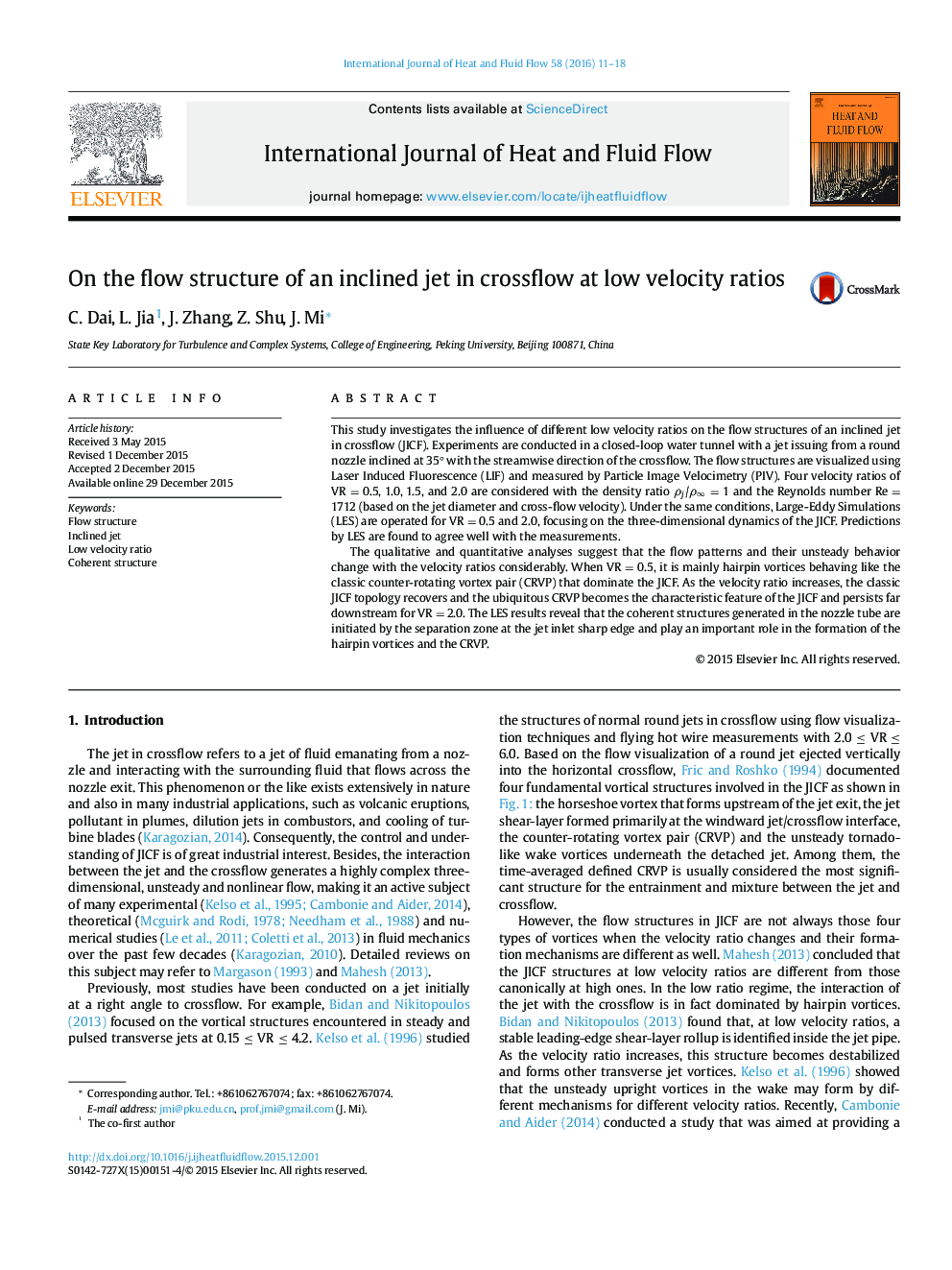| Article ID | Journal | Published Year | Pages | File Type |
|---|---|---|---|---|
| 655052 | International Journal of Heat and Fluid Flow | 2016 | 8 Pages |
•Flow structures of an inclined jet in crossflow (IJICF) at low jet-crossflow velocity ratios (0.5–2.0) are investigated using numerical LES and experimental LIF and PIV.•Flow patterns and their unsteady behaviors are observed to vary drastically with the velocity ratio changing from 0.5 to 2.0.•Different from previous observations, for present IJICFs, coherent structures generated in the jet-nozzle tube are found to play a significant role in forming hairpin vortices and counter-rotating vortex pairs.
This study investigates the influence of different low velocity ratios on the flow structures of an inclined jet in crossflow (JICF). Experiments are conducted in a closed-loop water tunnel with a jet issuing from a round nozzle inclined at 35° with the streamwise direction of the crossflow. The flow structures are visualized using Laser Induced Fluorescence (LIF) and measured by Particle Image Velocimetry (PIV). Four velocity ratios of VR = 0.5, 1.0, 1.5, and 2.0 are considered with the density ratio ρj/ρ∞ = 1 and the Reynolds number Re = 1712 (based on the jet diameter and cross-flow velocity). Under the same conditions, Large-Eddy Simulations (LES) are operated for VR = 0.5 and 2.0, focusing on the three-dimensional dynamics of the JICF. Predictions by LES are found to agree well with the measurements.The qualitative and quantitative analyses suggest that the flow patterns and their unsteady behavior change with the velocity ratios considerably. When VR = 0.5, it is mainly hairpin vortices behaving like the classic counter-rotating vortex pair (CRVP) that dominate the JICF. As the velocity ratio increases, the classic JICF topology recovers and the ubiquitous CRVP becomes the characteristic feature of the JICF and persists far downstream for VR = 2.0. The LES results reveal that the coherent structures generated in the nozzle tube are initiated by the separation zone at the jet inlet sharp edge and play an important role in the formation of the hairpin vortices and the CRVP.
